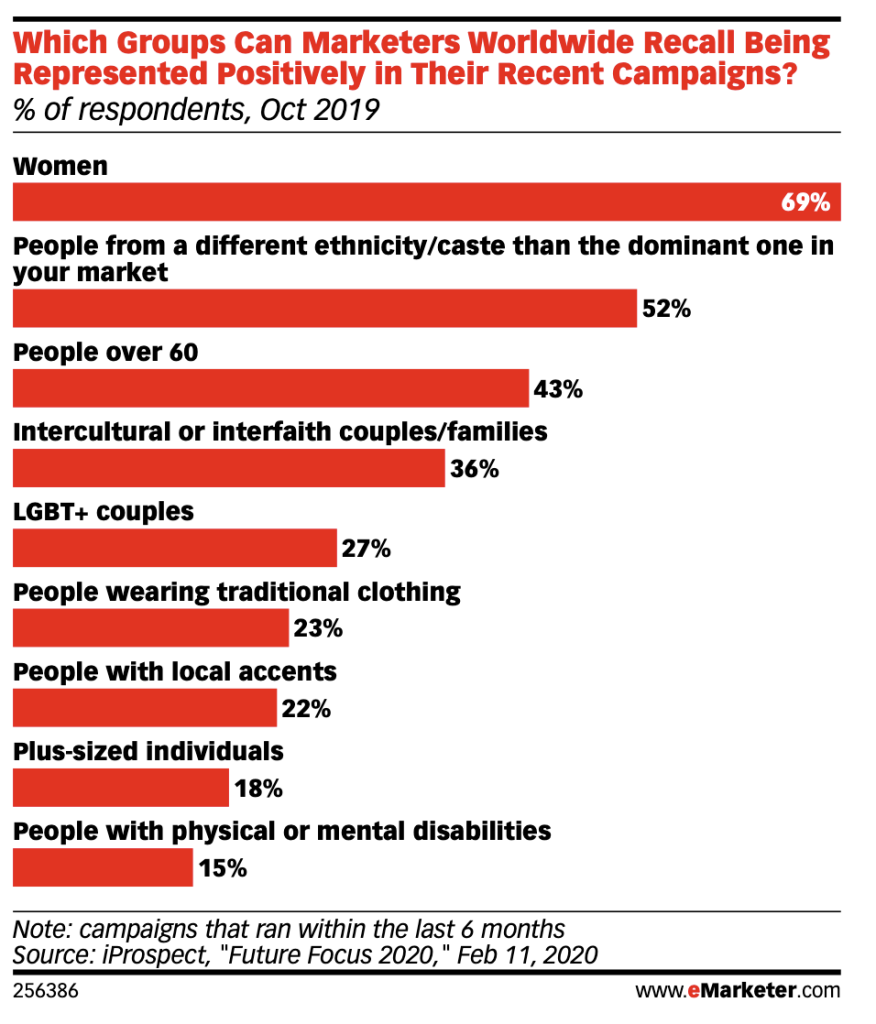http://ifcus.org/2016/11/28/hendras-vision/embed/  The November 2020 “Best Practices Guide for Inclusive Marketing” from eMarketer is brilliant.
The November 2020 “Best Practices Guide for Inclusive Marketing” from eMarketer is brilliant.
It provides key insights into how U.S. consumers think about D&I in digital comms efforts from brands — and how different communities feel about their representation and portrayal.
The report addresses two separate categories that we need to think about as digital comms professionals: representation and portrayal.
Representation is vital to promote diversity and inclusion — but just because we represent different communities in social media posts or ads doesn’t mean we are portraying these groups properly.
You could have the right intention, but actually hurt a specific community by the way you talk about or portray their group.
This impacts every meme we create, every animated gif we use, and every photo or video we promote. Are we portraying a stereotype? Are we hurting a community group accidentally?
Leading with empathy means not assuming that we know and humbly reaching out to get counsel from different community groups on ways to better portray them on social media.
We all need more input. We all need to stop assuming we’re doing it right.
Here’s a key example from eMarketer:
“An ad aimed at the LGBTQ community that uses a stereotypical white gay poster boy, dance music, and the word ‘fabulous’ is offensive and doesn’t reflect the diversity of the community,” he said. “The same goes for an ad that features a person of color in a supporting or service role surrounded by white people.”
best place to buy isotretinoin online What can we all do to become more inclusive digital communicators?

